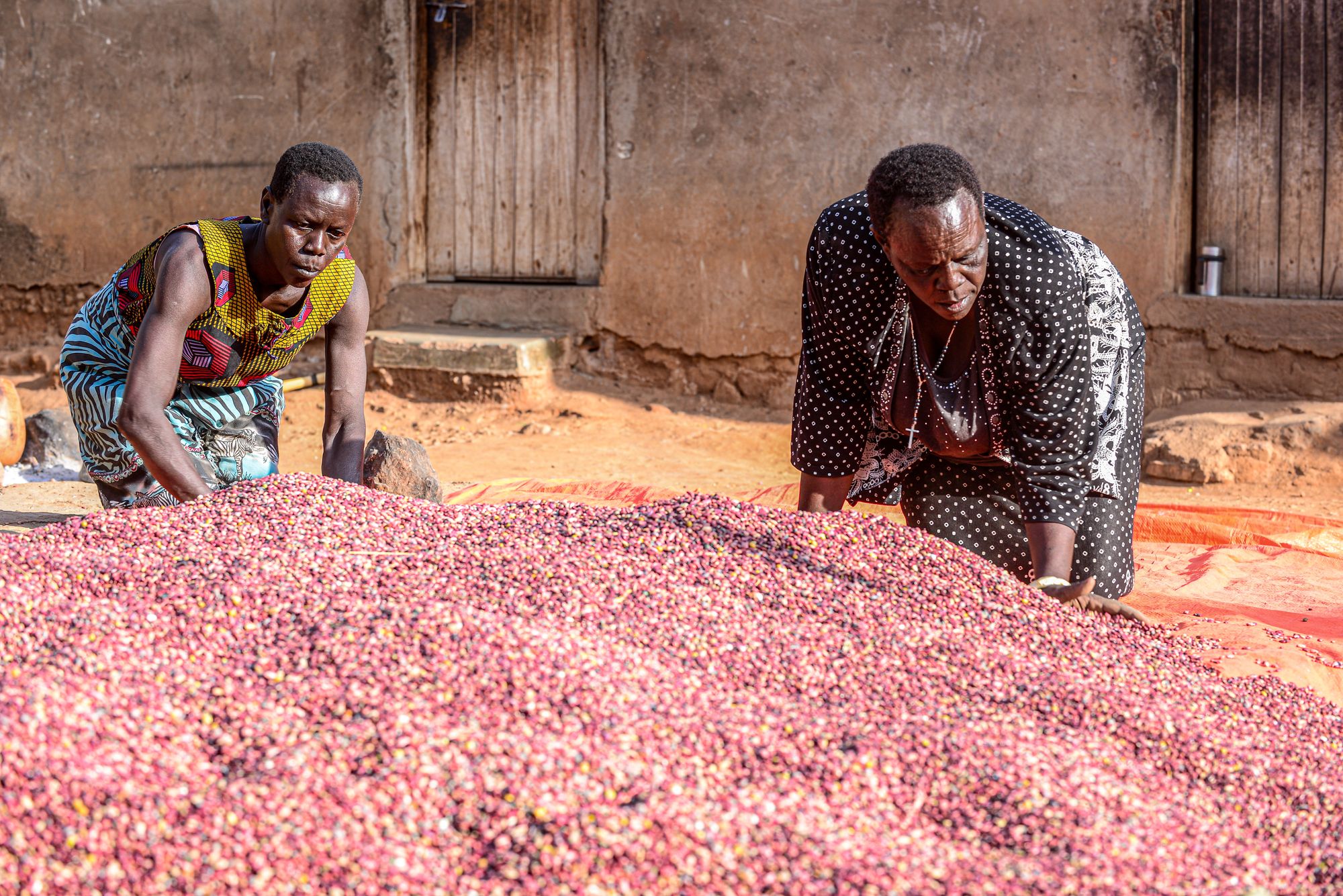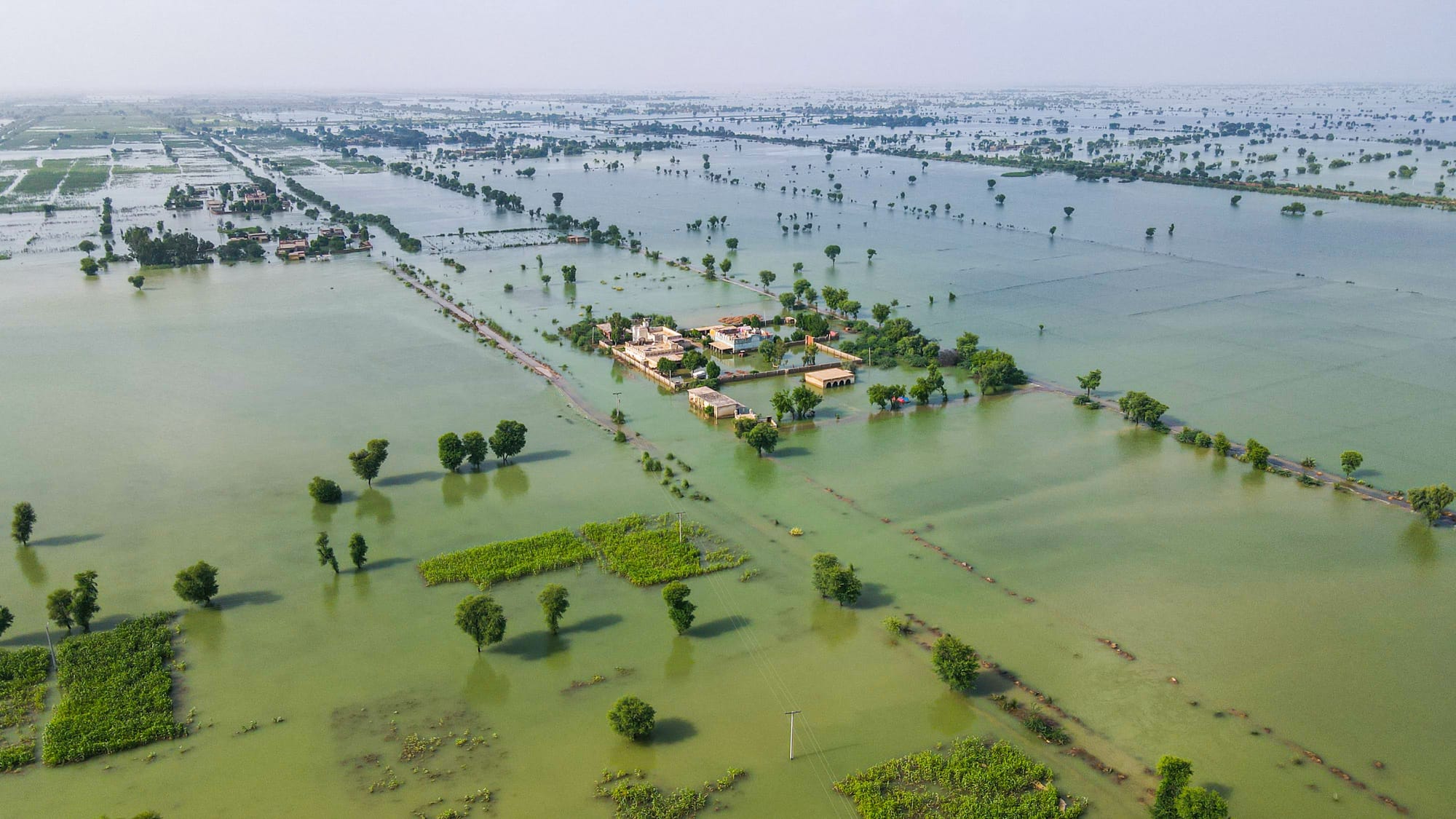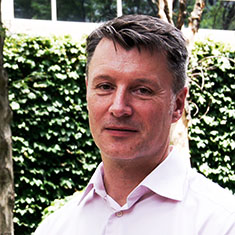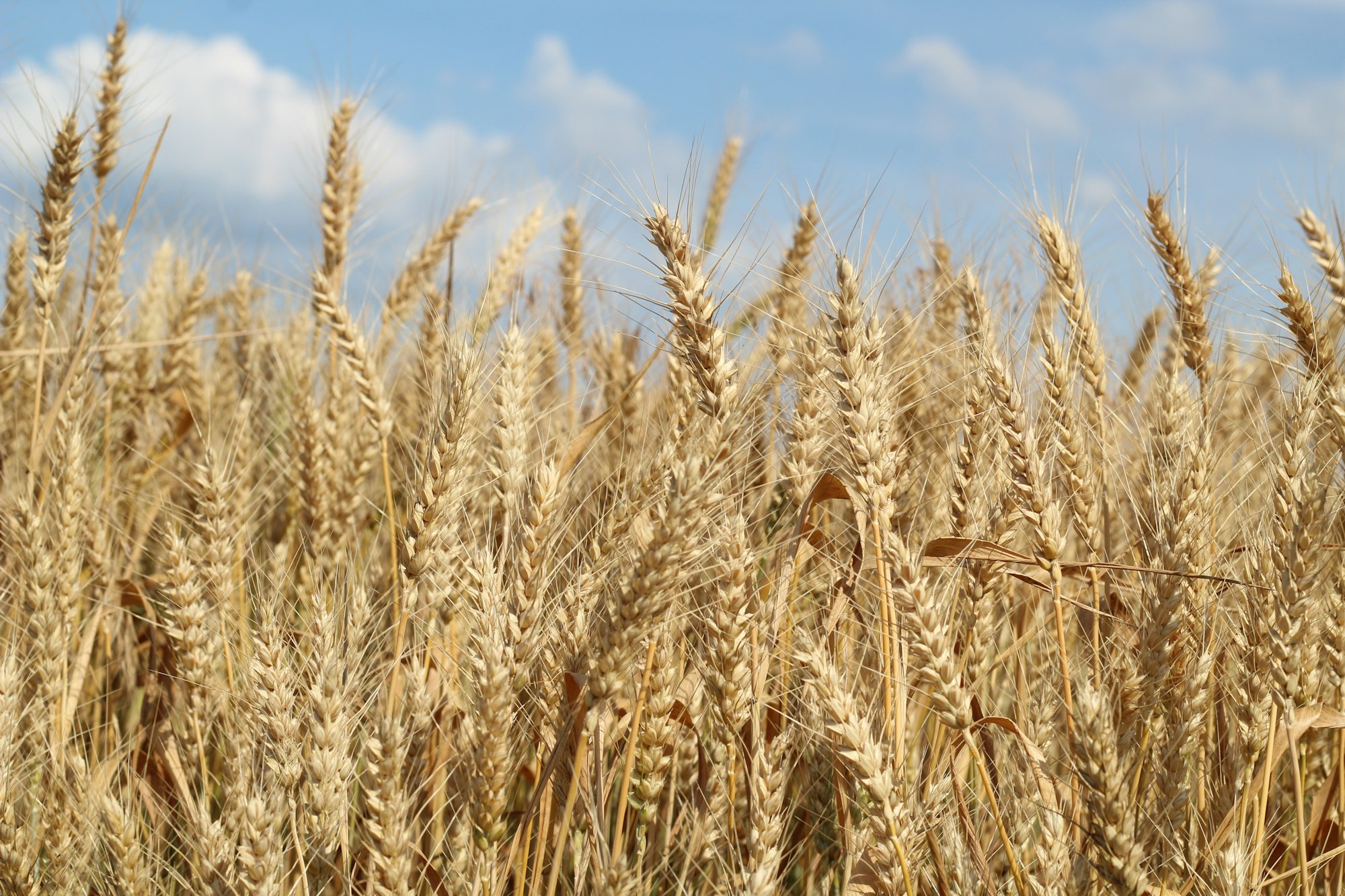The term climate-smart agriculture (CSA) describes an integrated approach to managing landscapes—including cropland, pastureland, forests, and fisheries—that addresses challenges related to food security and climate change. Approaches vary depending on the specific context, but generally, CSA aims to increase agricultural productivity and incomes, improve climate adaptation and resilience, and reduce greenhouse gas emissions.
This article considers how a U.S. Agency for International Development (USAID) project in Uganda is helping smallholder farmers boost their resilience to an increasingly unpredictable climate by using a market systems approach that addresses obstacles to adopting CSA practices.
A Fragile Environment
The International Climate Risk Report labels Uganda as one of the countries least prepared for and most vulnerable to climate change. Poor soil quality and land degradation in many parts of the country have increased the vulnerability of community-level farming systems and weakened rural households' coping strategies. The onset, duration, and intensity of rains vary considerably from year to year, while the increase in frequency of extreme weather events such as floods and droughts has devastating impacts on the economy and livelihoods.
USAID designates Karamoja, one of the least developed regions of Uganda, as a "major resilience focus zone" and, therefore, a target area for its Feed the Future Inclusive Agricultural Markets (FtF IAM) project, managed by DAI. Traditionally pastoral, the semi-arid region in northeastern Uganda has seen a growth in crop production, although farmers are struggling to cope with weather impacts and crop-destroying insects. Agro-input suppliers and manufacturers struggle to serve the region adequately due to high investment costs, low demand, and poor infrastructure, which in turn constrains small-scale farmers' access to high-quality seeds, climate-smart technologies, agro-processing, and financial services, and allows poor quality and counterfeit alternatives to flourish. Women, youth, ethnic minorities, and other marginalized groups are especially at risk and often excluded—even exploited—by traditional markets.
The five-year FtF IAM project is resolving some of these difficulties by facilitating inclusive, agriculture-led economic growth across 38 Feed the Future "zones of influence." Specifically, FtF IAM is building the capacity of market actors—private sector, government, and producer groups—to respond to opportunities and create and meet market demand among smallholders and subsistence farmers.
Linking the Farmers and Businesses
A core FtF IAM approach is to partner with climate-smart agro providers and introduce practical and sustainable "last mile" distribution models to incentivize them to expand into resilience focus zones. For example, the project has helped to set up a network of village agents to reach out to farmers, gauge their interest, help them access services, and broker business relationships between farmers and buyers. The agent links farmers and businesses (suppliers and buyers) and offers complementary extension services to ensure a good crop yield for the buyers.
Private sector partners also offer embedded services to help smallholder farmers withstand climate shocks common to the resilience zones. These include demonstration gardens and radio talk shows that provide instruction in the safe use of agrochemicals, effective post-harvest handling, and integrated pest management.
Some of the most effective climate-smart technologies and services supported by the project are:
- Early-maturing seeds that are drought tolerant and pest/disease resistant
- Fertilizer blends suitable for local soils and crops
- Small-scale irrigation systems
- Agro insurance
- Sustainable soil and land management techniques
- Technologies to inform weather-related decision making
- Formal seed systems for quality declared seeds (QDS)
The uptake of these inputs and technologies has improved the quality and quantity of produce generated by smallholder farmers and boosted their incomes. In early 2023, some 4,270 farmers in Karamoja were accessing high-quality inputs because of the project's efforts, including seeds, fertilizer, and animal feed. Of these, 996 were female and 628 were youth farmers accessing inputs worth $55,530. Given the region's low level of private sector investment, this uptake is an encouraging result and acts as an incentive to increase the scale of engagement between businesses and smallholder farmers.
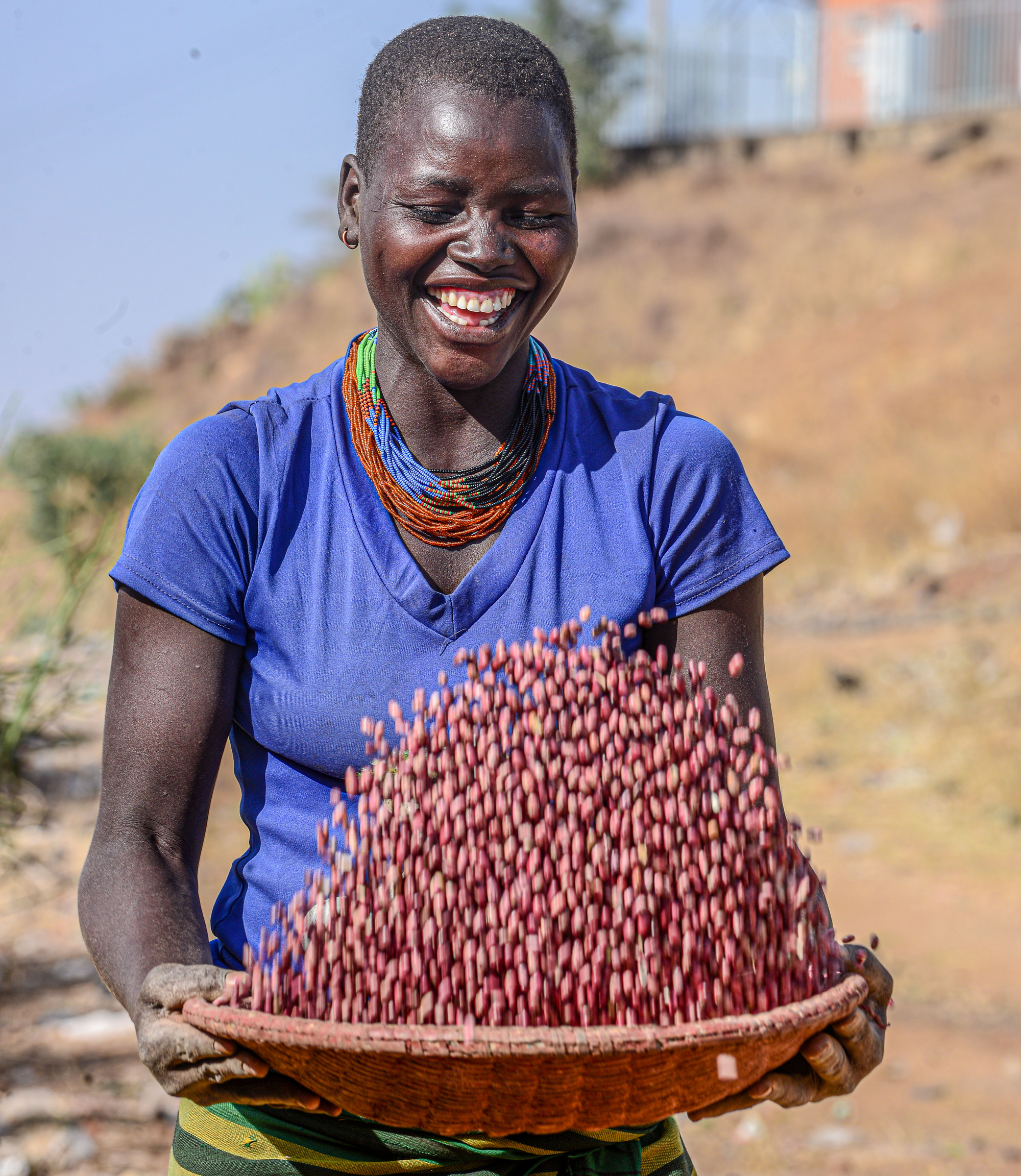
Sourcing and Supplying the Best Seeds
During drought seasons, Karamoja has to import more food than it produces. This deficit is in part due to the lack of high-quality, affordable, drought-resistant seeds, including those for iron-rich beans (IRB). Farmers tend to use their own seeds or low-quality seeds procured from local markets, perpetuating the cycle of dependence on humanitarian support and the importation of quality seeds from other regions. Local, commercial production of high-quality seeds would help address this critical food security gap and meet the population’s nutritional needs.
Given the scarcity of high-quality certified seed and seed multipliers, FtF IAM looked for ways to reduce risks and enable private producer groups and commercial farmers in Karamoja to co-invest in the production of QDS. In 2021 and 2022, the project engaged eight producer organizations and eight private farms and agribusinesses to multiply certified IRB seeds that are more resilient to climate impacts. Farmers were provided with 22,980 kilograms of the certified Bean 2 variety to grow across 766 acres, eventually selling 30,862 kilograms of produce for $26,400. This assistance was bundled with access to agricultural insurance valued at $71,000 to reduce the risks associated with changes in climate. The resulting production is a small step but a significant move in the right direction.
With support from the project, the Uganda Oil Seed Producers and Processors Association (UOSPA)also distributed 3,332 kilograms of high-quality sunflower seed and 1,400 kilograms of soybean seed to 1,753 farmers, who went on to harvest 1.13 million kilograms of sunflower seeds and 88,200 kilograms of soybeans. UOSPA and the participating farmer cooperatives in the project area realized $101,432 through produce sales, which increased farmer household incomes by $61,288 after collective marketing.
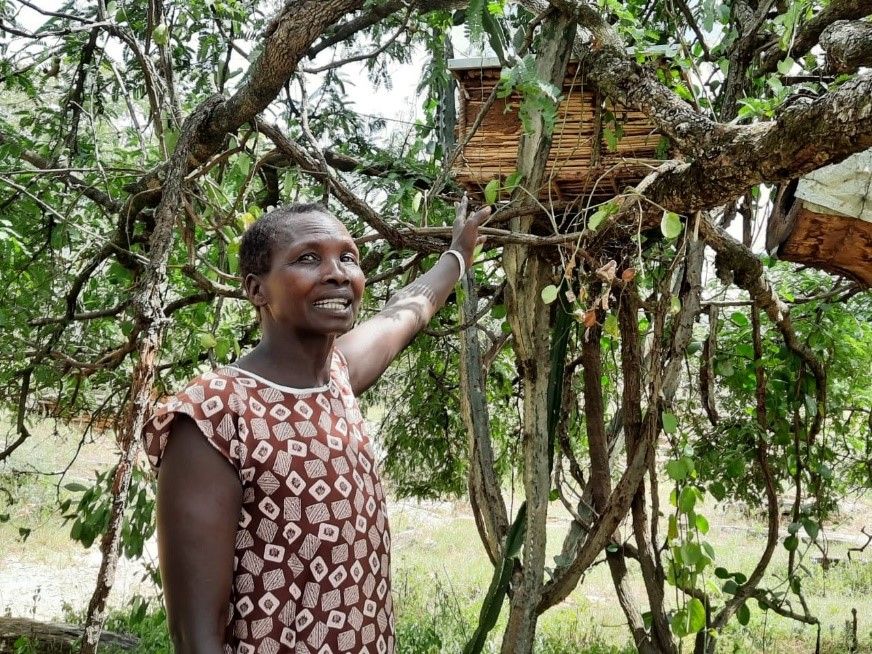
Beekeeping
Another successful partnership for FtF IAM was with Golden Bees Limited (GBL), which expanded its beekeeping out-grower network in the Amudat and Nakapiripirit districts of Karamoja.
Beekeeping is a crucial component of livelihood diversification in Sub-Saharan Africa, supplementing household incomes, food, and medicine. Despite being one of only five countries licensed to export honey to the EU, Uganda has failed to meet home-grown demands for honey, let alone exploit this external market. According to the Uganda Beekeepers Association, a mere 800 to 1,200 tons of honey is produced annually across the country due to a lack of bee stock. Eighty percent of Ugandan beekeepers use traditional practices and technologies that have not been updated to international best practices and operate far below their potential.
To increase honey quantity and quality, smallholder beekeepers need practical training on recommended beekeeping practices, modern equipment (hives and smokers), and protective clothing. The project partnered with GBL to support marginalized groups and communities already participating in beekeeping, helping boost their incomes while strengthening the company’s access to higher-value markets.
In 2021, beekeepers across Karamoja—mainly women—were provided with affordable, higher-yielding, climate-smart beehives and equipment using a co-financing model offered by GBL’s suppliers. In 2022, when the hives were full, the company extracted 1,342 kilograms of beeswax from the comb honey during processing and purchased 158 kilograms of beeswax from locally processed honey worth over $400. In all, 237 women sold 5,609 kilograms of comb honey worth more than $9,000, representing 41.8 percent of the total volume delivered. The remaining 56.5 percent was produced and sold by 256 young people, amounting to 5,183 kilograms of honey worth $8,300.The women and youth beekeepers are continuing to substantially supplement their incomes through honey production, selling directly to the Kenyan market, GBL, and other aggregators.
Resilience into the Future
By using a market systems approach as an entry point for private entities to increase their involvement in Karamoja, FtF IAM has helped move the needle on climate adaptation and community resilience. The many actors involved—from cooperatives and small and medium-sized enterprises to fintech and agro-input companies—are now realizing the advantages of expanding into the resilience zones and building mutually beneficial relationships with the region’s farmers.
Now, smallholder farmers have access to affordable products, extension services, and markets for their increased yields. Financial products such as crop insurance provide buffers in times of crop loss and give them a chance to rebuild. Small-scale irrigation and affordable pumps allow them to plant crops all year round, reducing rain dependency. And beekeeping offers income support and helps address the consequences of poor nutrition. Perhaps most importantly, FtF IAM is showing that even the most underserved and marginalized populations can be supported to tackle the effects of climate change.
Find out more about the work of FtF IAM here.

